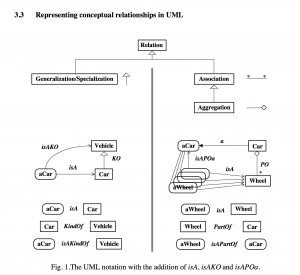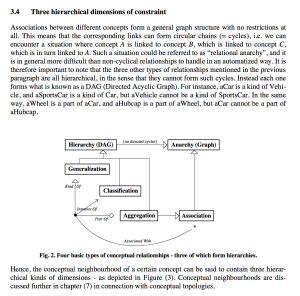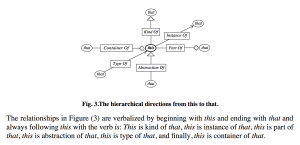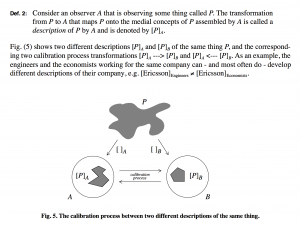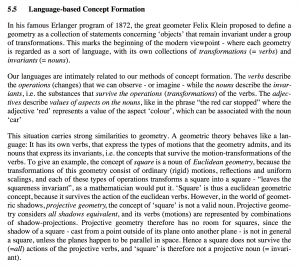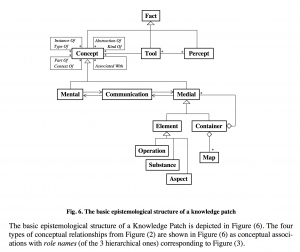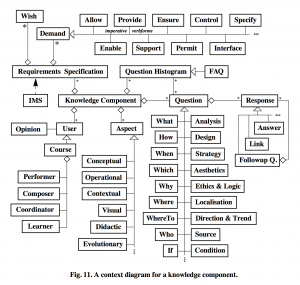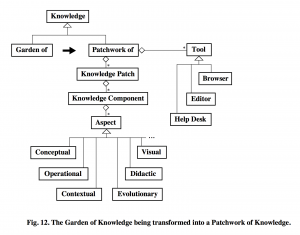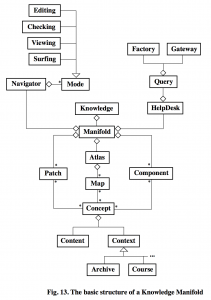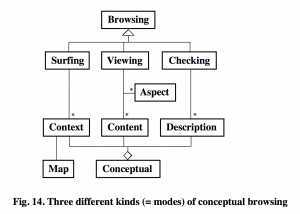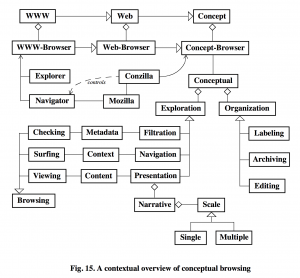This page is a sub-page of the page on Modeling and Mapping.
///////
Related KMR-pages:
• Conceptual Modeling at the old KMR web site.
///////
Abductive and Deductive thinking:
///////
The purpose of Conceptual Modeling is to help us disregard irrelevant structures by building relationships between idealized concepts that focus on what is essential. Efficient concepts disregard almost everything in a way that is noticed as little as possible. “The power of thinking is knowing what not to think about”.
Unified Language Modeling – a modeling technique to visually represent how we talk about things.
We have developed a concept-oriented modeling technique called ULM (Unified Language Modeling), which is a dialect of the UML (Unified Modeling Language), an international standard for information systems modeling that has emerged from the object-oriented modeling community. The purpose of ULM is to visually represent how we speak about a knowledge domain. Having visual access to the history of a verbal presentation or discussion renders it a permanence that greatly facilitates the conceptual calibration process that is involved in the negotiation of consensus within a group. We have applied the ULM technique to the modeling of the structure and activities of several different organizations (SIH, STEM, and UR) and projects (IT standardization, IT-accessibility, Dyslexia (SpråkaLoss)).
///////
Representing conceptual relationships in UML:
///////
Four basic types of conceptual relationships – three of which form hierarchies:
///////
The hierarchical directions from his to that:
///////
The calibration process between two different descriptions of the same thing:
///////
Language-based concept formation:
///////
The basic epistemological structure of a knowledge patch:
///////
A context diagram for a knowledge component:
///////
The Garden of Knowledge being transformed into a Patchwork of Knowledge:
///////
The basic structure of a Knowledge Manifold:
///////
Three different kinds (= modes) of conceptual browsing:
///////
A contextual overview of conceptual browsing:
///////

